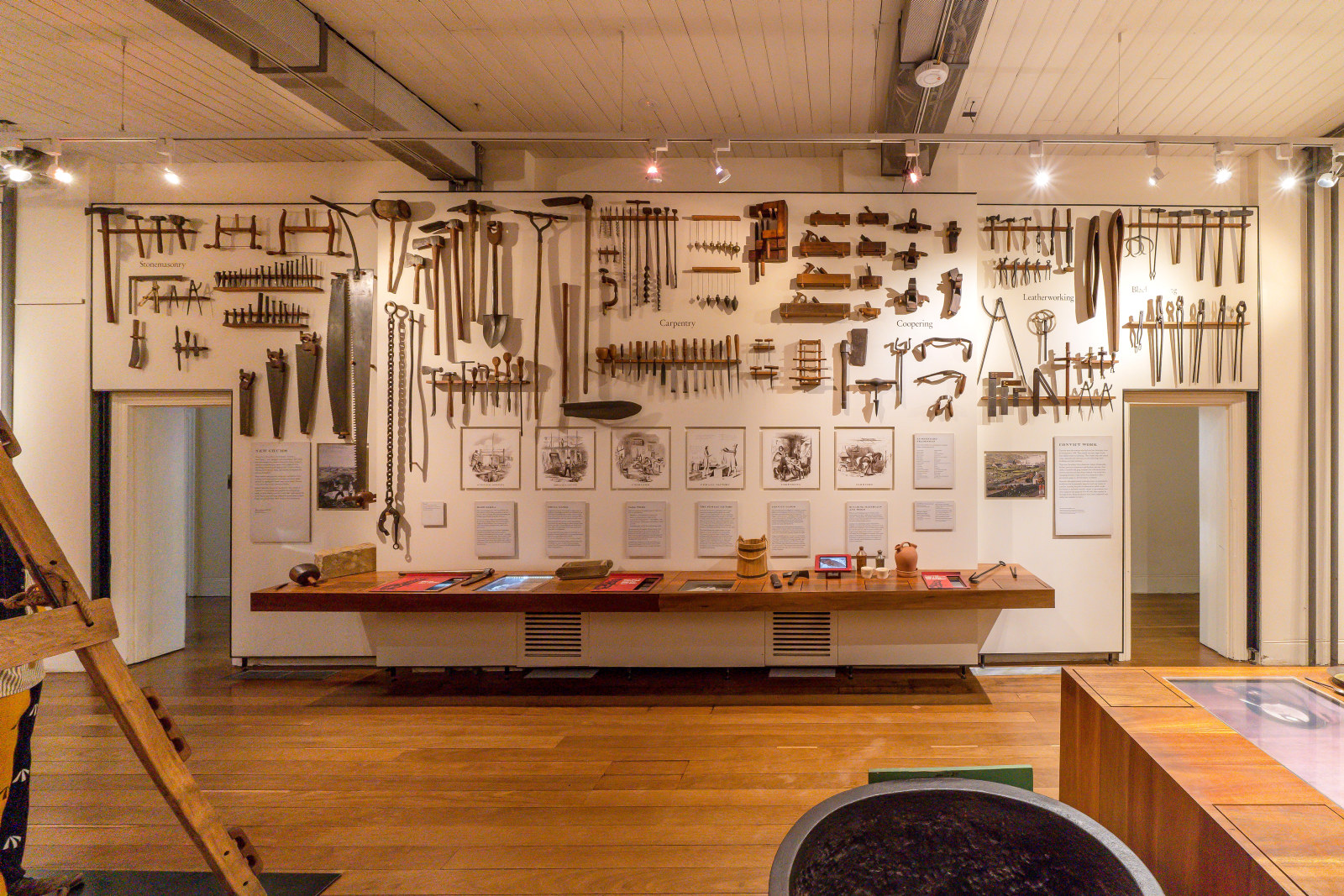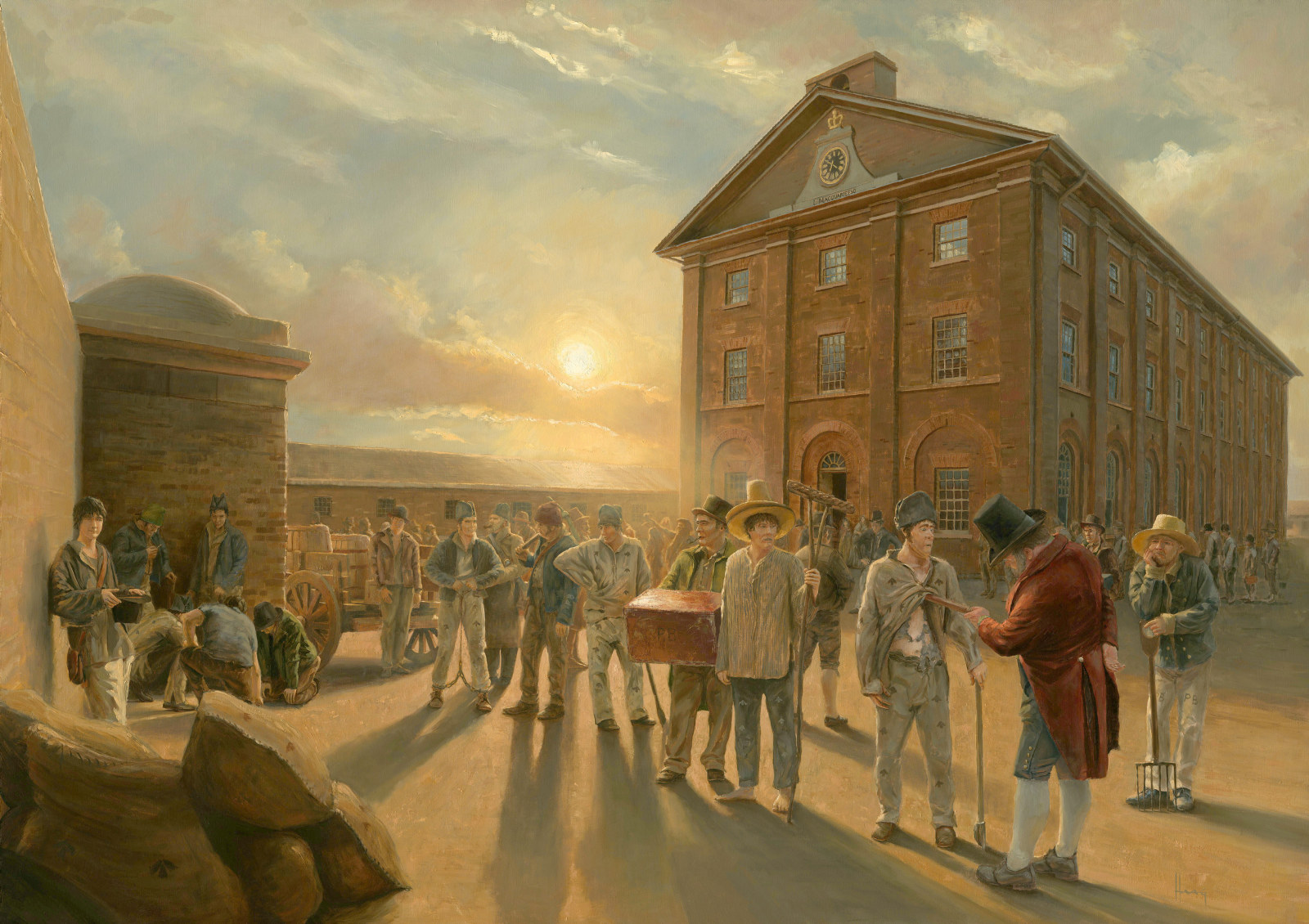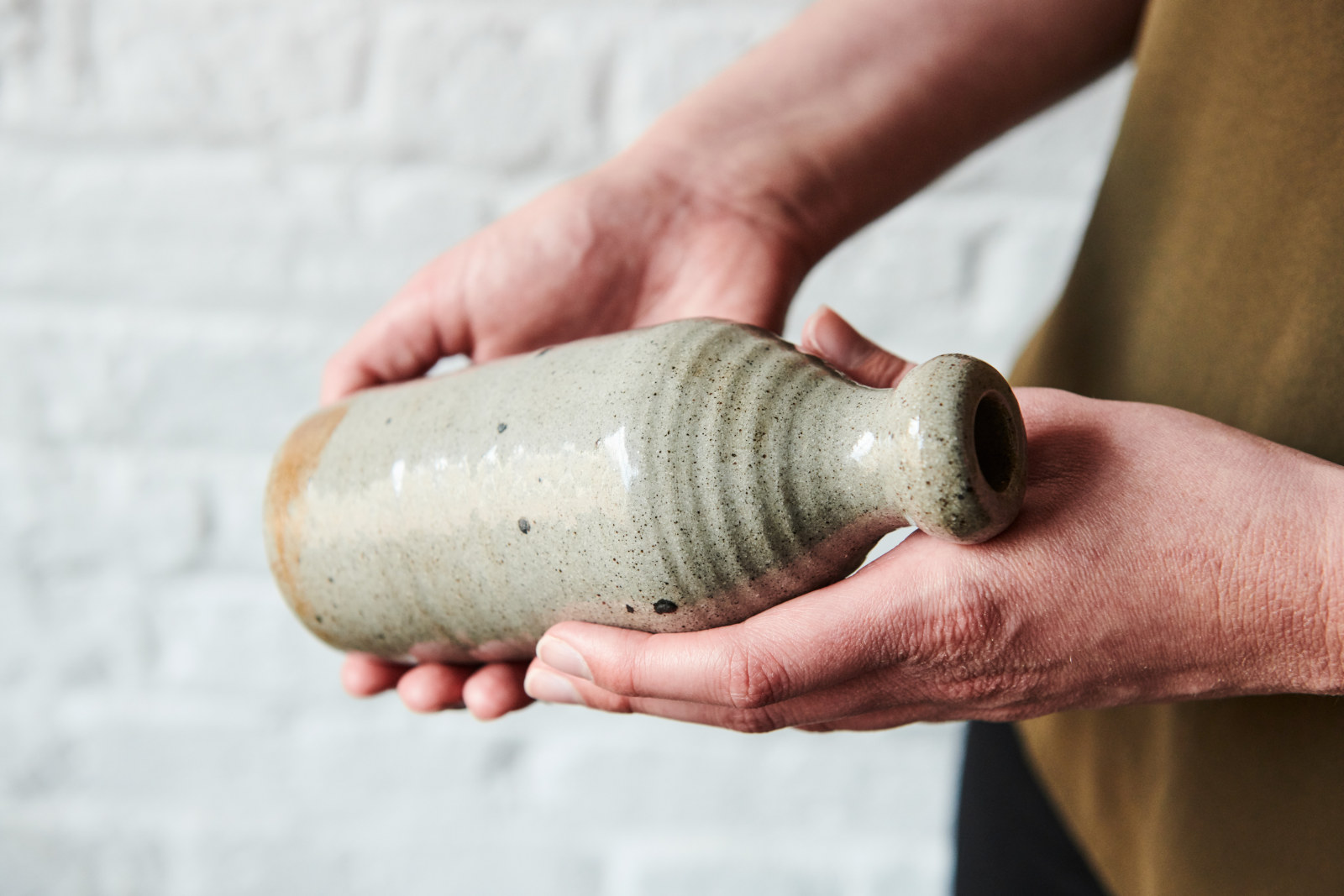Rum Hospital glassware
1816–1840s
Excavated by archaeologists from the south wing of the Rum Hospital, these medicine bottles, irrigation syringe and measuring glass fragments were used for the treatment of convict patients in the wards and attending the dispensary as outpatients. The bottles might have once contained medicines such as lead and opium lotion (for reducing inflammation) or jalap (for cleansing the bowels). Medical care in the convict era was quite rudimentary, with only about 220 standard medicines in use, compared with over 5,000 available now. In the earliest years of the Rum Hospital there were reports that the wrong medicines were frequently administered, and the treatments were quite non-specific, with the same medicines being used to treat diverse ailments. For example, convict John Rideaux was given a dose of jalap to treat his dysentery, and it was also used in a powder form to treat Edward Caine, suffering lumbago (lower back pain).
The convicts assigned to work at the Rum Hospital frequently stole medicines and other hospital supplies and sold them in town. In April 1817 Thomas Lawson was charged for breaking into the store and stealing medicines, including 10 pounds worth of quicksilver (mercury). Overseer William Wakeman was dismissed for drunkenness, incapacity and corruption – and for ‘assisting in drinking the spirituous cordial Medicines’.
Published on
Related

Convict Sydney
Objects
These convict-era objects and archaeological artefacts found at the Hyde Park Barracks and The Mint (Rum Hospital) are among the rarest and most personal artefacts to have survived from Australia’s early convict period

Convict Sydney
Convict Sydney
From a struggling convict encampment to a thriving Pacific seaport, a city takes shape

Learning resources
Explore our range of online resources designed by teachers to support student learning in the classroom or at home